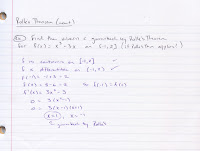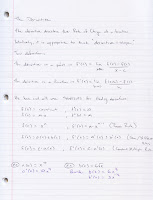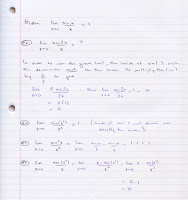After a second day of practicing evaluating limits, today focused on two smaller (but still important) ideas.
The first idea is that of the one-sided limit. The limit normally asks you to consider the behavior of a function for x values that are a little less than and a little greater than some value c. Sometimes this results in a limit not existing because of different left/right behavior.
Evaluating a one-sided limit is just like evaluating a normal limit. However, in the instance where behavior is different on the left and right sides of x = c, the one-sided limit simply asks for the particular side. If it is lim x -> c+, then you describe the right side behavior. If it is lim x -> c-, then you describe the left side behavior.
Continuity is an important idea in calculus because our main tools are only guaranteed to work when we have a continuous function. (In fact, at some point in the near future, we will worry about the notion of differentiability. This includes continuity but is in fact more restrictive).
Continuity is defined in calculus for a function at a point. Any math student can intuitively look at the graph of a function and determine whether it is continuous or not. If it has any holes, breaks, or gaps in it, it isn't continuous
at that point. You will mainly be concerned at being able to cite the reason why the function is not continuous.
Notes from today are below.


















